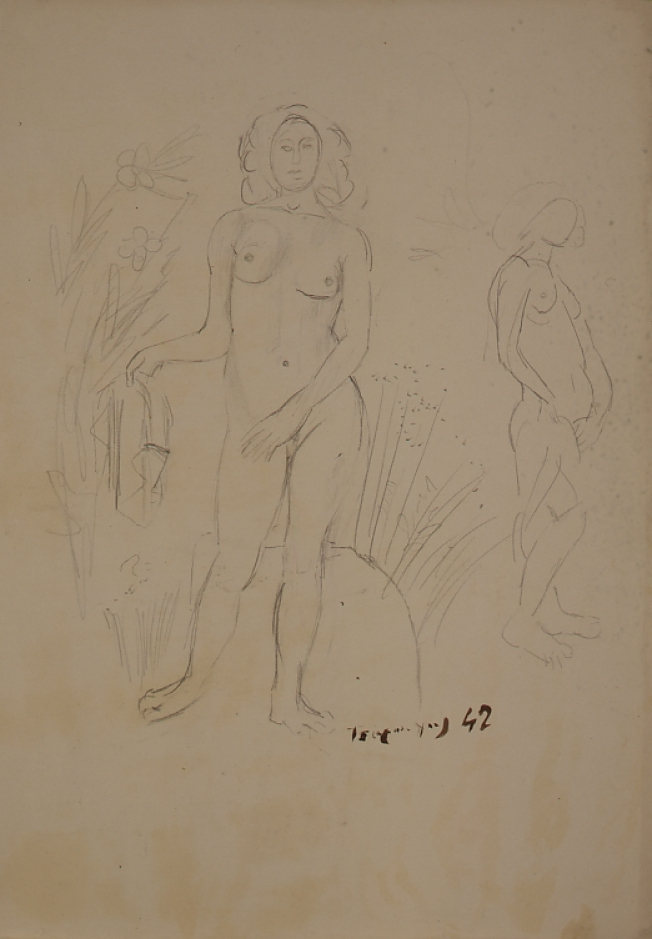Female nudes, 1942

He studied at the Athens School of Fine Arts under the professors S. Vikatos and K. Parthenis (1928-33). He also studied alongside Fotis Kontoglou, by whom he was initiated into Byzantine art.
Yannis Tsarouchis was a dominant figure among the creative artists of the 'generation of the '30s'. By his work, which was modern and at the same time profoundly Greek, he contributed to the renewal of Greek art by achieving a yoking together of the hellenocentric ideology of his generation with the European avant-garde, while at the same time he supplied the measure by which modern art can serve the national heritage. A thinker as well as a painter, with a breadth of mind and learning, he was leavened by the new movements of the twentieth century which he got to know at first hand during his long periods of residence in Paris (1934 – 1936, 1967 – 1980). Thus, features from the Greek tradition as he had experienced them in studying vernacular art and the Karaghiozis shadow theatre, but also from Hellenistic and Byzantine art and that of Fayum were interpreted through the arabesque style of Matisse, with the Oriental roots as a shared characteristic. Bright colours with clean surfaces which eliminate mass, and postures which make reference to representations in antiquity were the main means of expression which he used to portray male 'working-class' types. Sailors, soldiers, footballers, whether shown clothed or nude, standing or sitting are always depicted with the same monumentality, in a mood which extols their everyday existence. In a purely anthropocentric form of painting which runs through the whole of his artistic creation, Tsarouchis experiences an affirmation of life in which the face and body effortlessly retain their integrity and beauty.





